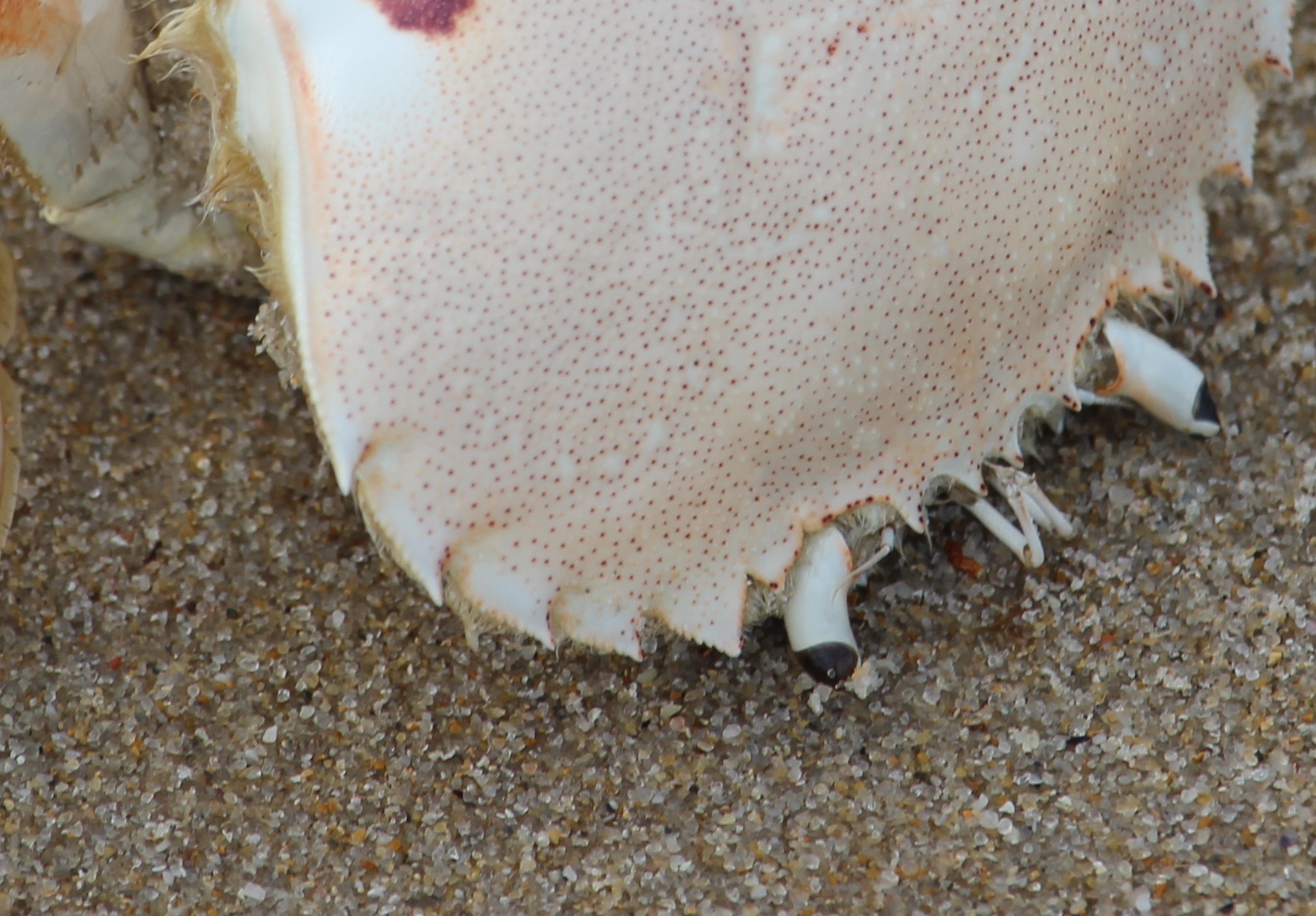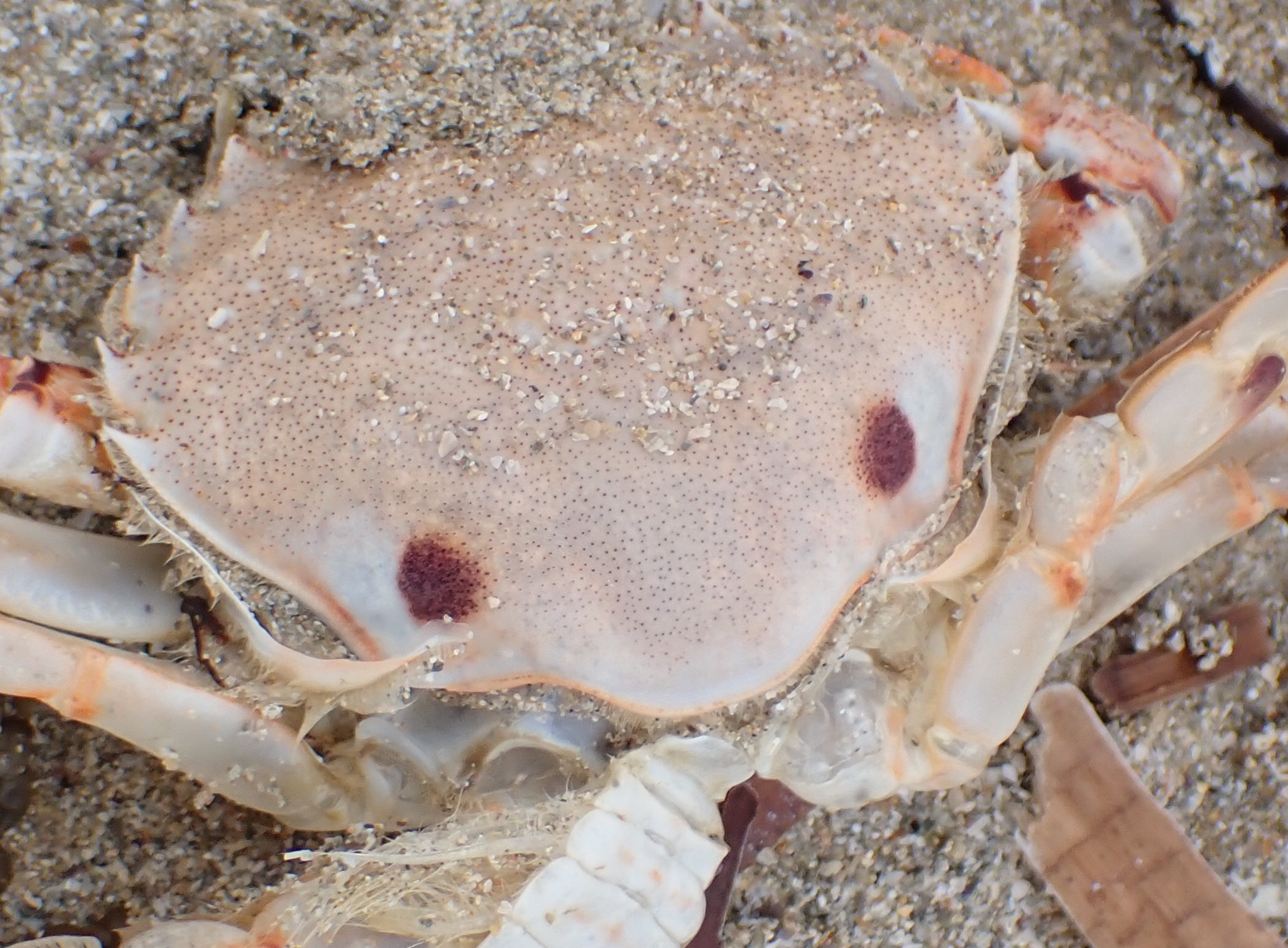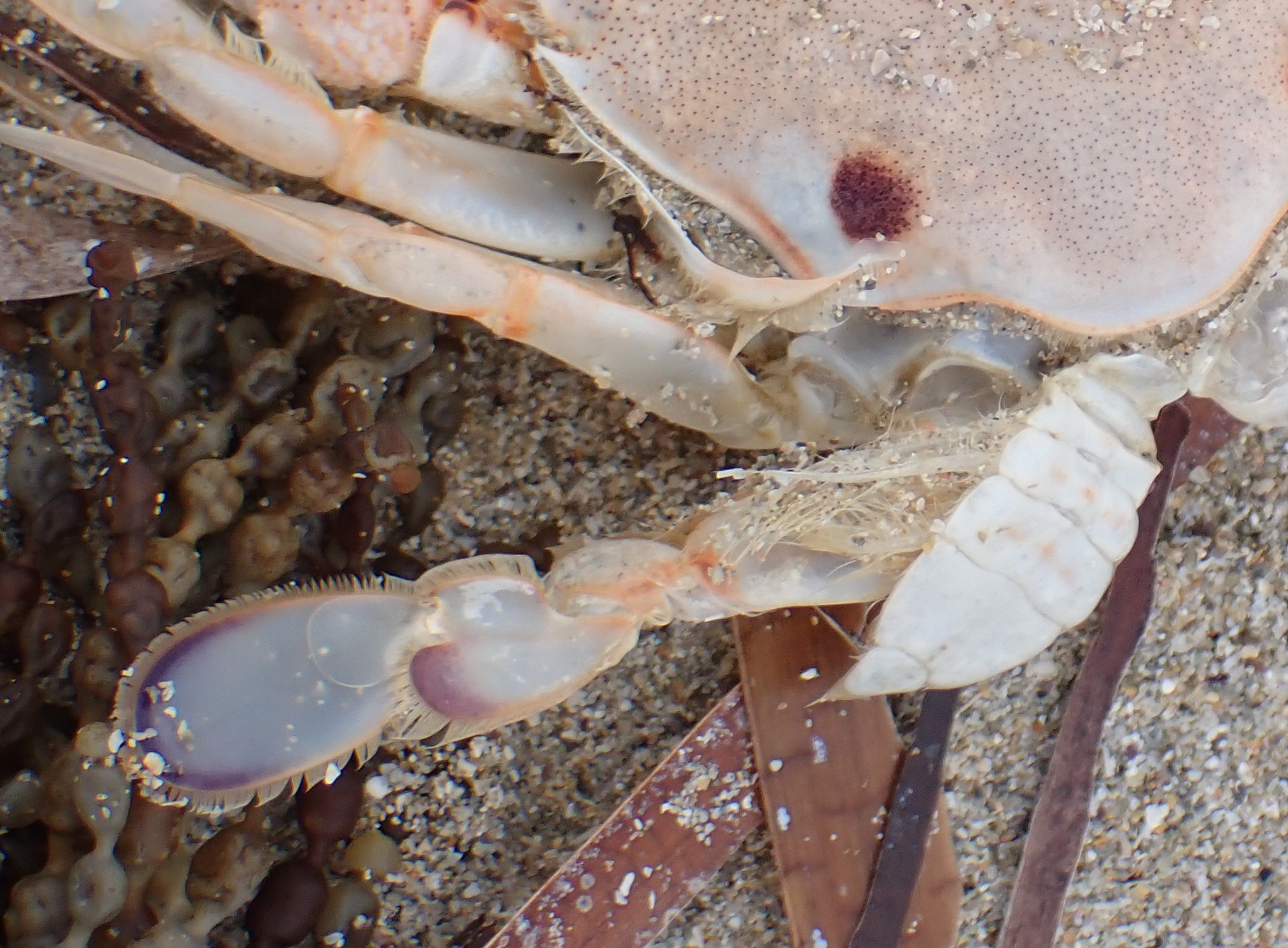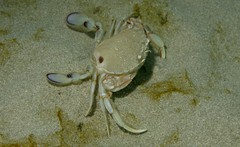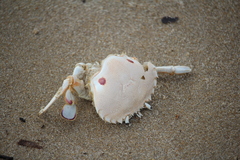This crab is rather agile and moves away quickly burying itself under the sand. Like most crabs this species is most active at night and annoy fishermen stealing the baits from their hooks. Similar to the invasive Carcinus maenas. Both of these crabs are commonly found washed up dead along Tomahawk Beach
How to identify Ovalipes australiensis?
The carapace features two large reddish-brown dots towards the back whilst the colour of this crab varies from greyish to a pale orange-browns, the hind leg is a swimming leg and as such is flattened, and paddle shaped.
What habitats does Ovalipes australiensis live in?
Can be found along sandy beaches out to depth of around 100m
What is the distribution of Ovalipes australiensis?
Southern Australia from Western Australia to Queensland, including Tasmania
How big does Ovalipes australiensis grow?
Can grow to around 110mm across the carapace
Files & Downloads
Disclaimer: A lot of work goes into trying to identify and ensure accurate identifications are made and that the listed Descriptions, Sizes, Habitats and Distribution information is as accurate and valid as possible. Unfortunately, information in this arena is ever changing and as such no guarantee can be offered that it is correct or currently valid as a result the information is provided as a guide, and it is always suggested that you do a little research to ensure you have the latest and most accurate information. View the reference's or bibliography I welcome any feedback and comments on the information provided.
